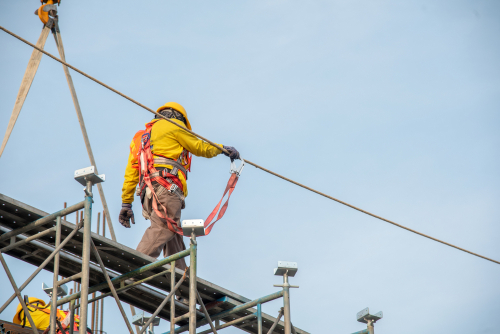
In industries such as construction, telecommunications, and maintenance, tasks performed at heights are not just commonplace but essential. However, the risks associated with working aloft demand rigorous safety training to ensure the well-being of workers and compliance with regulatory standards. Online safety training courses like “Secure Heights” have emerged as pivotal resources, offering comprehensive education and practical skills to mitigate risks effectively.
Importance of Safety Training for Working Aloft
working at height online course presents inherent risks, including falls, equipment malfunctions, and environmental hazards. Proper safety training is crucial to equip workers with the knowledge and skills to identify risks, implement safety measures, and respond to emergencies promptly. “Secure Heights” focuses on these critical aspects to foster a culture of safety and ensure safe working practices aloft.
Structure and Content of the Course
The “Secure Heights” online safety training course is structured to provide a thorough understanding of safety protocols and procedures specific to working at heights. It begins with an introduction to relevant safety regulations and standards, ensuring participants understand their legal responsibilities and the consequences of non-compliance. The course content includes:
- Hazard Recognition and Risk Assessment: Participants learn to identify potential hazards associated with working at heights, such as unstable surfaces, electrical hazards, and adverse weather conditions. They are trained in conducting comprehensive risk assessments to mitigate risks effectively.
- Safe Work Practices and Procedures: The course emphasizes the importance of adopting safe work practices when working aloft, including the correct usage of personal protective equipment (PPE) like harnesses, lanyards, helmets, and anchor points. Practical modules include demonstrations and simulations to ensure participants can apply safety procedures confidently.
- Emergency Preparedness and Response: “Secure Heights” includes training on emergency procedures specific to height work, such as rescue techniques and first aid protocols. Participants learn how to respond promptly and effectively to incidents, minimizing harm and ensuring the safety of themselves and their colleagues.
- Continuous Improvement and Compliance: The course covers ongoing safety improvement strategies and best practices for maintaining compliance with regulatory requirements. Participants gain insights into organizational policies and industry standards, enhancing their ability to contribute to a safe working environment.
Advantages of Online Learning for Height Safety
Online safety training offers numerous advantages that enhance the effectiveness and accessibility of height safety education:
- Flexibility: Participants can access training modules from any location with internet access, allowing for flexibility in scheduling and accommodating diverse work environments.
- Interactive Learning Tools: Multimedia elements such as videos, animations, and quizzes engage participants and facilitate better understanding of complex safety concepts.
- Progress Monitoring: Online platforms enable real-time tracking of participant progress and completion rates, allowing employers to ensure compliance and identify areas for further development.
Certification and Professional Development
Upon successful completion of the “Secure Heights” course, participants receive a recognized certification. This credential validates their competence in height safety practices, enhancing career opportunities and demonstrating commitment to workplace safety standards.
Conclusion
“Secure Heights: Online Safety Training for Working Aloft” plays a crucial role in promoting safety and professionalism in industries where tasks performed at heights are routine. By providing comprehensive knowledge, practical skills, and a flexible learning environment, this course empowers workers to execute their duties safely and confidently. Through continuous education and adherence to best practices, organizations can mitigate risks, reduce incidents, and cultivate a safety-focused culture that prioritizes the well-being of their workforce.